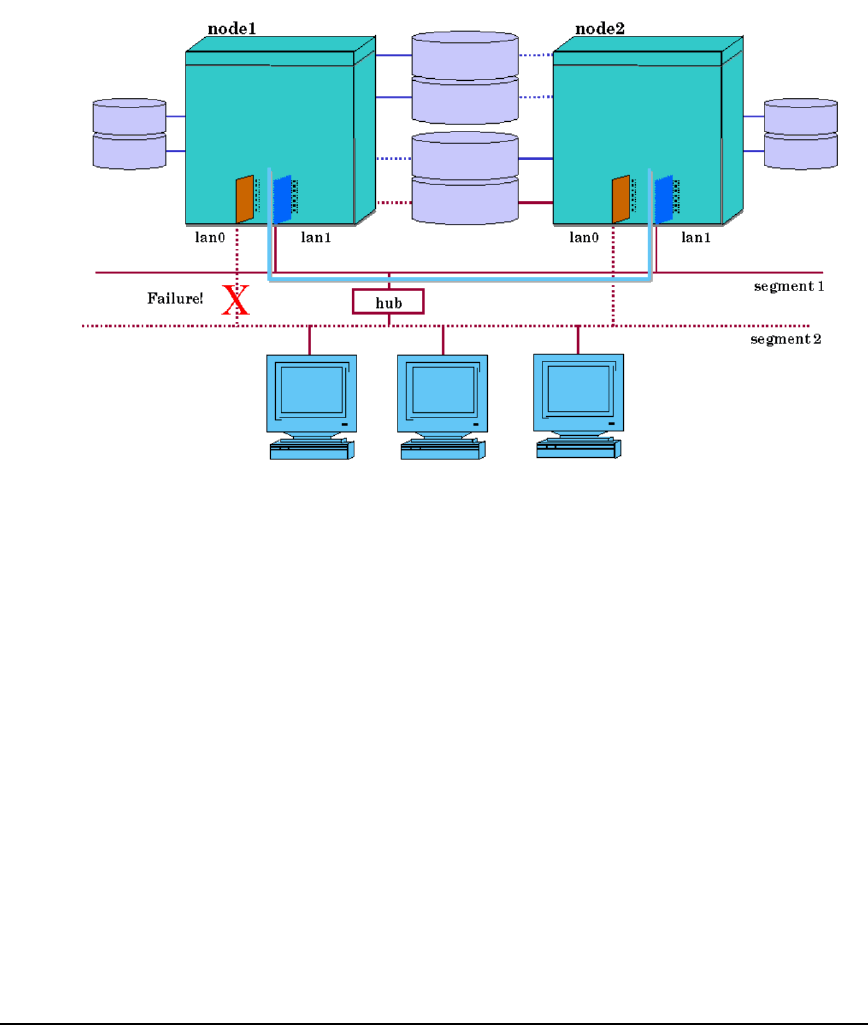Managing Serviceguard 11th Edition, Version A.11.16, Second Printing June 2004

Understanding Serviceguard Software Components
How the Network Manager Works
Chapter 3102
Figure 3-18 Local Switching After Cable Failure
Local network switching will work with a cluster containing one or more
nodes. You may wish to design a single-node cluster in order to take
advantages of this local network switching feature in situations where
you need only one node and do not wish to set up a more complex cluster.
Switching Back to Primary LAN Interfaces after Local Switching
Whenever a node is halted, the cluster daemon (cmcld) will always
attempt to switch any Serviceguard-configured subnets running on
standby interfaces back to the primary interfaces. This is done
regardless of the link state of the primary interfaces. The intent of this
switchback is to preserve the original network configuration as it was
before the cluster started. Switching back occurs on the specified node if
a cmhaltnode command is issued or on all nodes in the cluster if a
cmhaltcl command is issued.
Remote Switching
A remote switch (that is, a package switch) involves moving packages
and their associated IP addresses to a new system. The new system must
already have the same subnetwork configured and working properly,
otherwise the packages will not be started. With remote switching, TCP










